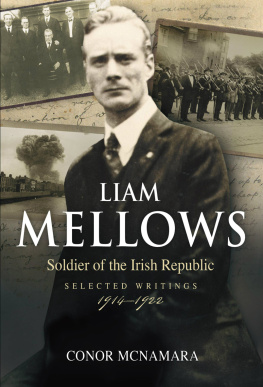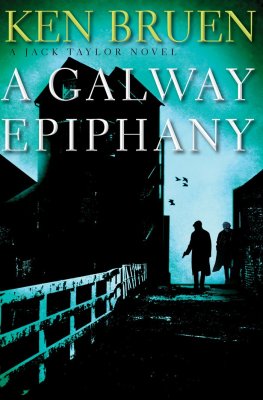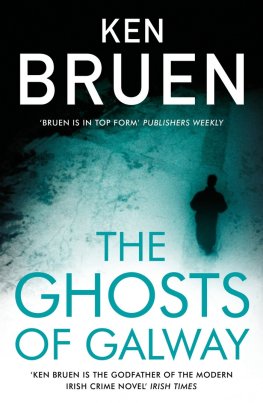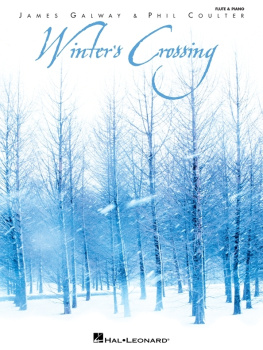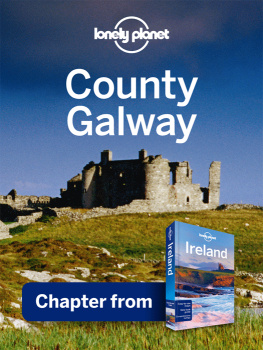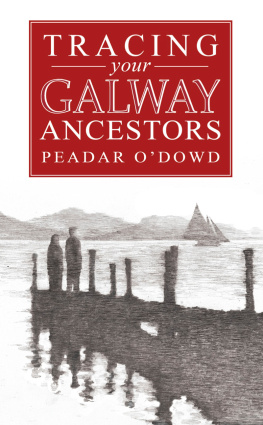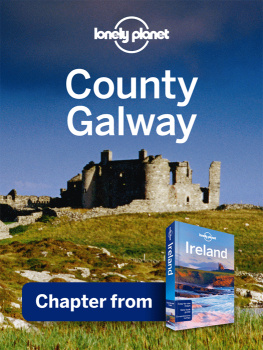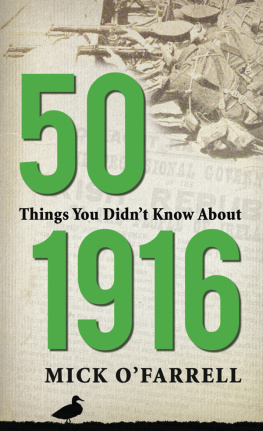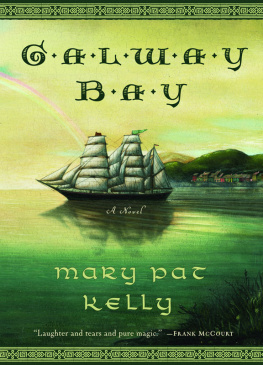WAR AND REVOLUTION
IN THE WEST OF IRELAND
Dr Conor McNamara has written extensively about the history of the Irish revolution and rural society. He was previously a winner of the National Library of Ireland, History Fellowship (2009) and was awarded the 1916 Scholar in Residence at NUI Galway (201517). He was a Moore Institute, NUI Galway, Visiting Fellow (2017) and this is his fourth publication.
WAR AND REVOLUTION IN
THE WEST OF IRELAND
GALWAY, 191322
Conor McNamara
First published in 2018 by
Irish Academic Press
10 Georges Street
Newbridge
Co. Kildare
Ireland
www.iap.ie
Conor McNamara, 2018
9781785371608 (Paper)
9781785371592 (Cloth)
9781788550192 (Kindle)
9781788550208 (Epub)
9781788550215 (PDF)
British Library Cataloguing in Publication Data
An entry can be found on request
Library of Congress Cataloging in Publication Data
An entry can be found on request
All rights reserved. Without limiting the rights under copyright reserved
alone, no part of this publication may be reproduced, stored in or
introduced into a retrieval system, or transmitted, in any form or by any
means (electronic, mechanical, photocopying, recording or otherwise)
without the prior written permission of both the copyright owner and the
above publisher of this book.
Interior design by www.jminfotechindia.com
Typeset in Adobe Garamond 11/14 pt
Cover design by www.phoenix-graphicdesign.com
Cover/jacket front: Members of the Irish Volunteers and RIC outside Athenry RIC barracks in advance of the handover of the building to the Volunteers, 1922. Courtesy Sean Cleary, Athenry, Co. Galway.
Cover/jacket back: Body of Volunteer Pat Loughnane, murdered by Crown Forces, Shanaglish, Co. Galway, November 1920. Courtesy Hardiman Library, NUIG.
Contents
Acknowledgements
I relied upon the support of a large number of scholars, friends and researchers in the writing of this book. Cormac Comhra read an early draft and gave valuable feedback. Tony Varley was as supportive as ever with his knowledge of the complexities of land issues in the West. Carla King supervised the original doctoral thesis from which this study emerged and I am most grateful for her support. Tom Desmond Senior was an inspirational mentor in the Manuscripts Department of the National Library. Miriam Moffitt was most generous with her research on the Protestant experience of revolution. Martin ODonoghue read sections of the manuscript and provided valuable insights into the period during our time in Galway. I am most grateful to Mary Harris, History Department, NUI Galway, for giving me a wonderful opportunity at the University. Dan Carey, Moore Institute, NUI Galway, has been most encouraging and supportive of my work throughout my time at the Moore Institute. Likewise, Martha Shaughnessy and Chloe Michaels Graham, Moore Institute, and John Cox, Aisling Keane, Niall McSweeney and Barry Houlihan of the Hardiman Library have been most helpful. Marie Mannion, Heritage Officer, Galway County Council, has been exceptional in promoting public history in the West. amonn Gilligan and Gerry Cloonan, Craughwell; Brian Quinn, Gabe Cronnelly and San Cleary, Athenry; Luke Callinan, Galway and too many others to mention, have given me the benefit of their knowledge of the characters and events described in this book. All the team at Irish Academic Press, including Conor Graham, Myles McCionnaith, Ciara Connelly and Fiona Dunne have been fantastic to work with. I am very grateful to the Moore Institute, NUI Galway for awarding me a Visiting Scholar Award in late 2017 which allowed me to finish this project. My greatest thanks is due to John Cunningham, History Department, NUI Galway, for his encouragement and support. I am grateful to Jackie and Matthew Meagher, New York, and Gerard Meagher and everyone at The Old Town, Manhattan, for their wonderful support over the last number of years. I would like to thank my wife Meredith for her unstinting belief in this project. I am most thankful to my parents, Dermot and Helen, for instilling in all of us an enduring interest in Irish history.
Conor McNamara
Athenry, Co. Galway
February 2018
List of Tables
INTRODUCTION
The Gnarled and Stony
Clods of Townlands Tip :
Galway in 1913
T his study explores social and political change in Galway from 1913 to 1922 and examines how rural communities mediated the unprecedented upheaval of the revolutionary period. The period that has become known as the Irish revolution was traditionally perceived as an heroic phase in the Irish nations historic quest for national self-determination, culminating in the withdrawal of the Crown Forces and the victory of the revolutionary forces of the Republic. The struggle for independence was fought within a climate of insecurity and fear, however, and the uncertainty that the rise of militant nationalism engendered, fuelled political antagonism between an older, more respectable generation of nationalists and an impatient generation of young revolutionaries.
The under-articulated fault lines of rural society were frequently obscured in national political discourse by the unchallenged hegemony of the Irish Parliamentary Party (IPP) and the distaste for sectional politics which the desire for nationalist solidarity inculcated. Political culture in Galway as elsewhere in Ireland was characterised by factionalism and the intensity of local political rivalries. For many nationalists, the rise of militant republicanism represented the primordial forces of anarchy and bloodshed, and rural communities were required to choose between the old and respectable, and the new, the young and the unknown. This study examines the uncertainty the republican campaign generated among ordinary nationalists which frequently manifested itself across generational cleavages between younger republicans and older generations of nationalists, an economic chasm between the rural poor and strong farmers and landowners, a political gulf between the urban world of the small town and its rural environs, and a sectarian rift between the small Protestant community and the Catholic majority.
The principal issues permeating scholarly investigation into the Irish revolution concern the extent to which ordinary peoples social and political aspirations evolved and the degree to which they found expression in the respective campaigns of the Irish Volunteers and Sinn Fin. The evolution of the struggle reflected the broader complexities of Irish society and the advance of violent nationalism defies a linear, national meta-narrative. A comprehensive study of events within diverse communities reveals many surprising and frequently awkward conclusions, which in retrospect, could not have been accommodated in the domain of conventional local history.
Political revolution fuelled a violent and traumatic period of turmoil and the social solidarity required by the leadership of nationalist Ireland partially obscured the complexity of a society characterised by divergent political traditions. To gain an appreciation of the formative dynamics of the Irish revolution, an analysis of the complex evolution of public opinion across diverse regions and communities is necessary. A coherent understanding of the nuances of local communities, events and personalities must be integrated into any survey of national transformations. A uniformity of experience of political upheaval across disparate regions cannot be assumed in a society where an intensely local sense of identity saw national events interpreted through distinctly local prisms of identity and allegiance. A failure to grasp the complex spectrum of regional distinctiveness reinforces an assumed meta-narrative, strengthening an imagined national narrative.


